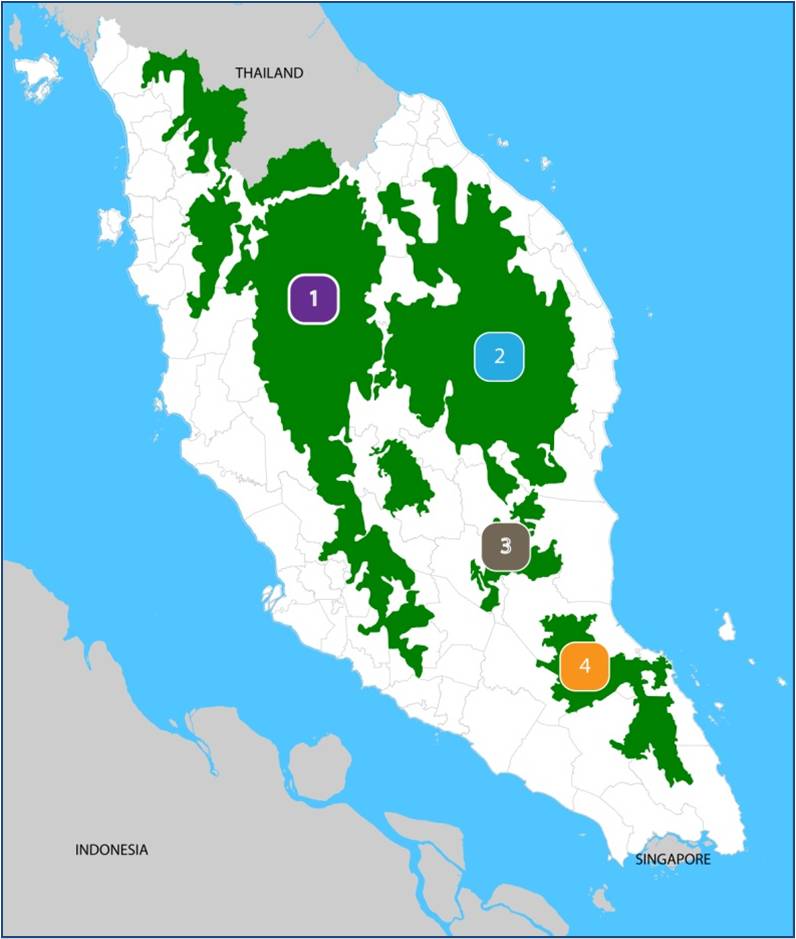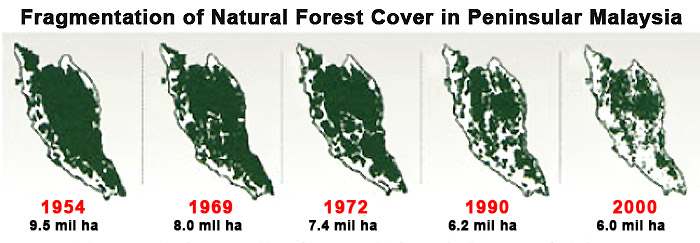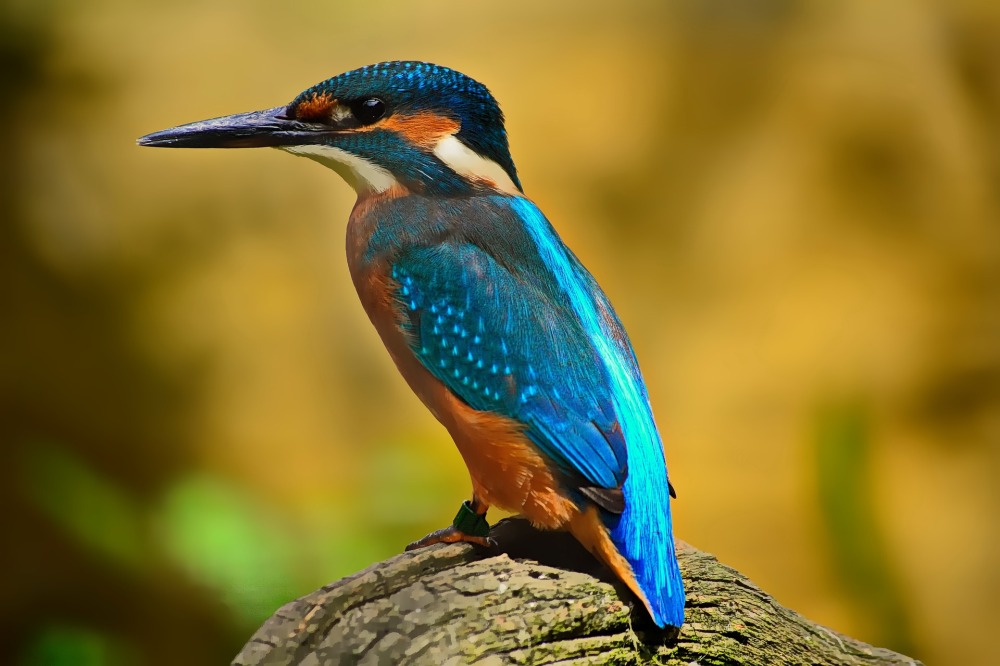A major conservation effort taking place in Malaysia that is hidden in the shadows. The Central Forest Spine Master Plan (CFSMP) birthed in the early 2000s, aims to protect and connect patches of key forest habitats in Peninsular Malaysia through corridors. CFSMP has been in the works since 2014 with a total budget of USD 47 million (RM200 mil). This article covers the basic overview of this project and some of the challenges it’s currently facing.
What is the Central Forest Spine (CFS)?
The Central Forest Spine (CFS) is composed of four major natural forest complexes, that sit in the center of Peninsular Malaysia. The complex covers a whopping 5.5 million square hectares spanning over the states of Kedah, Perak, Kelantan, Terengganu, Pahang, Johor, Negeri Sembilan and Selangor.
- Banjaran Titiwangsa (Titiwangsa Range) – Banjaran Bintang (Bintang Range) – Banjaran Nakawan (Nakawan Range)
- Taman Negara (National Park) – Banjaran Timur (Timur Range)
- Tanah Lembap Tenggara Pahang (Southeastern Pahang Wetlands), Tasik Chini (Lake Chini) and Tasik Bera (Lake Bera)
- Taman Negara Endau Rompin (Endau Rompin National Park) – Rizab Hidupan Liar Kluang (Kluang Wildlife Reserve)

The four deep forest complexes that make up the Central Forest Spine. Image from the Federal Department of Town and Country Planning (2018)
Why Is This Plan Important?
The National Physical Plan (NPP) – a national policy for physical land development plans – has identified forest fragmentation as a ‘threat to forest conservation and biodiversity protection’. As opposed to having 4 small, fragmented patches of forest, one large connected forest patch promotes better dispersal of seeds and movement for wildlife, providing better ecological connectivity and improving gene flow.
In other words, one big forest is better than 4 little forests from an ecological perspective. Without movement and connection between patches, species would be limited in their ability to survive and reproduce (e.g. difficulty in finding food, suitable habitats, mates).

The decrease in forest cover in Peninsular Malaysia from the 1950s to late 1990s in millions of hectares. Image from Greenwood International’s Blog (2013).
Also, as part of efforts to conserve the national emblem of Malaysia, the Malayan tiger – which is found only in Peninsular Malaysia and the southern tip of Thailand (it is no longer found in any other part of Southeast Asia). The Malayan tiger is currently listed as Critically Endangered with only 80 to 120 surviving mature individuals (IUCN, 2018). The CFS provides key habitat area for the Malayan tiger and thus, is critical for tiger conservation.
The CFSMP is one of the two plans the Federal Government of Malaysia has in place for protecting biodiversity and ecosystem services (the long list of benefits humans derive from the environment). The National Tiger Conservation Action Plan (NTCAP) is the other plan in place, aimed at conserving the Malayan tiger.

An image of a Malayan tiger captured via camera trap. Image from The Star (2015).
How Will The Forests Be Connected?
The forest complexes are to be connected by maintaining and expanding forest reserve areas, rehabilitating barren or lost wildlife corridors (pathways that allow plants and wildlife to move between forest patches) and building viaducts for wildlife crossings to link disconnected forest patches.
The movement of wildlife between these corridors would allow for pollination and seed dispersal. The CFS Master Plan report lists some animal groups that would play key roles in these processes:
- Insects – including bees, butterflies, moths, beetles
- Birds – including hornbills, sunbirds, flowerpeckers, and spiderhunters
- Bats – particularly fruit bats
- Primates – including leaf monkeys, macaques, and gibbons
- Rodents – including rats, squirrels and flying squirrels, porcupines
- Sun bears
- Civets
- Ungulates – Including most deer species and wild boar
This also means that the protection and conservation of these forests patches provide habitat and conserve the above wildlife as well as countless other species. By protecting our land, we would also stand to benefit more in terms of ecosystem services, tourism, cultural benefits and by means of land management.
“Human activity, particularly the clearing of native vegetation for other non-forest land uses such as agriculture, settlement and infrastructure development, is breaking-up the natural habitat into unconnected parts. Forest fragmentation and edge effects from deforestation have pervasive and deleterious impact on biodiversity and ecosystem. In particular, habitat fragmentation usually leads to habitat destruction, thus reducing the amount and diversity of plants and animals.” – CFS1 Master Plan for Ecological Linkages (2009)
Who Is Funding This?
The project is being funded by the Global Environment Facility (GEF), an organisation established in the 1992 Rio Earth Summit (a.k.a the game-changing environmental summit). GEF is comprised of 183 countries, international institutions, civil society organizations and the private sector that addresses global environmental issues.
In the last 26 years, GEF has funded over 4500 projects in 170 countries, providing over $17.9 billion in grants and co-financing an additional $93.2 billion for these projects.
What Are The Concerns?
The project is a much needed, and applauded effort in preserving key ecosystems in Peninsular Malaysia. However, this project is one of the first of its kind. A large, landscape-scale conservation effort that is multi-faceted. There is no template or reference point for this project and so it’s a learn-as-you-go type effort as well. Hence, there is a limit on the expertise and skill required to execute such an ambitious task.
Many experts in the field acknowledge that the project cannot achieve its objectives without first resolving certain issues. Due to the project involving a wide range of stakeholders, and discourse in power between state and federal governments, progress has been slower than expected. Other issues such as continued deforestation and illegal wildlife trade that is occurring within these protected areas resonated to the lack of enforcement and corruption that is still haunting the nation, despite the recent shift in ruling government.
Some reckon that a new perspective in viewing the project is needed, possibly a shift in approach and course of action. Strong leadership and better publicity in promoting the project are also some common points that often come up. Ultimately, the project will hugely benefit all of us (directly and indirectly) in the long-run, but while efforts to ensure this project is a success continue, concomittant action to prevent the loss of biodiversity due to the external concerns discussed above are imperative. It’s almost pointless having put together a large, beautiful forest only to have it empty and void of wildlife.
If you’re keen on keeping up with the Central Forest Spine: CFS Watch
Links for further reading are available below.
Cover image from Pixabay (2018).
References:
Federal Department of Town and Country Planning (2018). CFS 1 Master Plan for Ecological Linkages. (2009). Final Report. https://www.townplan.gov.my/download/CFS%20I_1.pdf











